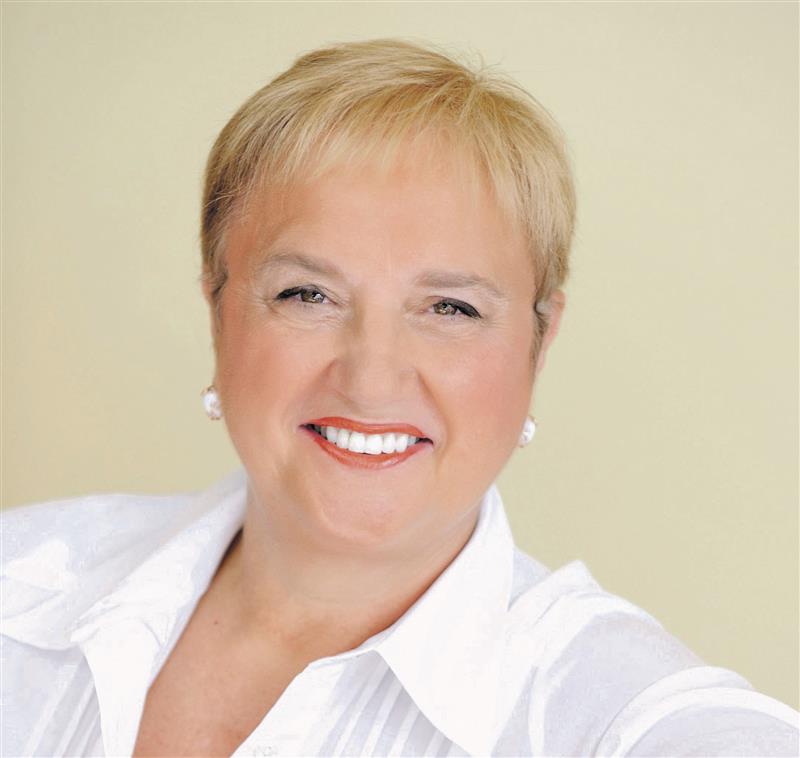Why Every Welder Needs Their Own Insurance Plan

The intense heat, electrical current, and hazardous materials inherent to welding create a risk environment unlike most other trades. When careers depend on joining metals under extreme conditions, the question isn’t whether to carry insurance but rather which types of coverage form the essential foundation for sustainable operations. For welding professionals, comprehensive insurance protection represents far more than regulatory compliance—it’s the difference between weathering inevitable incidents and facing financial devastation.
The Unique Risk Profile of Welding Work
Data from the Bureau of Labour Statistics reveals that more than 560,000 workers sustain welding-related injuries annually, making the injury rate approximately 100 times worse than the average across all occupations. These stark figures underscore a fundamental reality: welding operations create exposure to multiple simultaneous hazards that can affect both practitioners and third parties.
The welding environment combines electrical hazards, extreme temperatures, toxic fumes, and heavy equipment in confined spaces. Electric shock from direct contact with arcs or through conductive equipment represents one of the most serious risks. Burns occur from hot metal, sparks, slag, and ultraviolated radiation, affecting skin and eyes with equal severity. Respiratory issues develop from inhaling metal fumes containing zinc, lead, chromium, and other hazardous substances, with short-term exposure causing metal fume fever whilst long-term exposure increases cancer risks.
Beyond direct physical hazards to workers, welding operations create substantial third-party liability. Approximately 40% of injuries involving welding equipment result from fires and explosions when flammable materials ignite from sparks, arcs, or flames. Welding sparks—molten metal particles flung through the air—regularly travel considerable distances, igniting combustible surfaces and causing property damage far beyond the immediate work area. The potential for catastrophic incidents means even seemingly routine projects carry significant financial exposure.
Understanding Essential Coverage Types
Welders insurance encompasses multiple policy types designed to address distinct risk categories. Public liability insurance forms the cornerstone of protection, addressing claims arising when welding operations cause injury to clients, contractors, or members of the public, or damage property belonging to others. This coverage responds to incidents like sparks igniting nearby materials, heat warping client equipment, or bystanders suffering injuries from welding activities.
Professional indemnity insurance protects against claims that welded joints failed inspection, structural welds proved defective, or professional advice caused financial losses. Given that welding comprises roughly 25% of fatal occupational accidents and about one-third of all non-fatal amputations from workplace incidents, the importance of comprehensive coverage becomes abundantly clear. When a weld fails months or years after completion, professional indemnity coverage ensures the business can respond to claims without depleting operational capital.
Tools and equipment insurance addresses the significant investment welding professionals make in specialised equipment. TIG welders, MIG machines, plasma cutters, acetylene torch setups, and auxiliary equipment represent substantial capital expenditure. This coverage protects against theft at job sites, damage during transport, or loss whilst stored between projects. For mobile welders who transport equipment daily, this protection proves particularly valuable.
Commercial vehicle insurance covers work trucks, trailers, and vehicles used to transport welding equipment. Given that welding professionals routinely travel between job sites whilst hauling heavy, valuable equipment, standard personal vehicle policies prove inadequate. Commercial coverage addresses both liability for damage caused to others and physical damage to business vehicles.
Contractual and Professional Requirements
The welding industry increasingly demands proof of insurance before engagement. Commercial clients, construction firms, and property managers commonly require welders to demonstrate minimum coverage levels before commencing work. These requirements typically specify particular policy types and minimum coverage amounts, with general liability coverage of one to two million dollars representing standard expectations.
Some jurisdictions implement licensing requirements that mandate insurance coverage. Whilst regulations vary considerably, the trend clearly favours increased insurance requirements for welding professionals. Even where legal mandates don’t exist, practical necessity drives insurance adoption. Sophisticated clients understand the risks inherent to welding operations and simply won’t engage uninsured contractors.
The global welding market, valued at approximately 25 billion dollars in 2024 and projected to exceed 34 billion dollars by 2030, continues expanding across construction, automotive, aerospace, and manufacturing sectors. As the industry grows and professionalises, insurance requirements become more stringent. Welders operating without appropriate coverage increasingly find themselves excluded from lucrative opportunities and relegated to smaller, less profitable projects.
The Financial Reality of Operating Uninsured
Consider a scenario where welding sparks ignite materials at a construction site, causing a fire that damages the building structure and neighbouring properties. Without adequate liability coverage, the welder personally bears responsibility for all damages, which can easily reach hundreds of thousands or millions of dollars. Legal defence costs accumulate rapidly even when claims prove unfounded, with attorney fees, expert witnesses, and court expenses quickly exceeding tens of thousands of dollars.
The medical expenses associated with welding injuries further illustrate the financial stakes. Arc eye, the painful corneal inflammation caused by ultraviolet light exposure, requires immediate medical attention and can result in significant treatment costs. More serious injuries—including severe burns, respiratory damage from toxic fume exposure, or electrical shock injuries—generate medical bills that can devastate uninsured workers or businesses liable for third-party injuries.
Professional reputation damage compounds financial losses. News of incidents involving uninsured welders spreads rapidly through industry networks and client communities. Potential clients increasingly verify insurance credentials before signing contracts, viewing adequate coverage as a baseline indicator of professionalism. Operating without insurance signals financial instability and irresponsibility, damaging business prospects even beyond immediate incident costs.
The welding equipment market alone is projected to reach nearly 29 billion dollars by 2032, reflecting the significant capital investments professionals make in their operations. Without appropriate insurance, a single theft, fire, or equipment failure can eliminate the ability to continue operations. Equipment insurance ensures that temporary setbacks don’t become permanent business failures.
How Insurance Enables Business Growth
Properly insured welding businesses access opportunities unavailable to uninsured competitors. Large commercial projects, government contracts, and relationships with major construction firms typically require specific insurance minimums. These high-value opportunities offer better margins, steadier work, and professional development possibilities that help businesses scale beyond small residential projects.
Insurance coverage also facilitates subcontracting relationships. General contractors and project managers need assurance that all workers on site carry appropriate coverage, as gaps in insurance create liability exposure for everyone involved. Welders who can promptly provide current certificates of currency demonstrating comprehensive coverage position themselves as preferred subcontractors.
The ability to bid confidently on diverse projects expands when insurance coverage aligns with project requirements. Welders with comprehensivetrade insurance can pursue opportunities in multiple sectors—from structural steel fabrication to pipeline work, from automotive manufacturing to marine applications—without concern that insurance limitations will prevent contract execution.
Risk management resources provided by insurers represent another valuable benefit. Many insurance providers offer safety consultation, training materials, and compliance guidance that helps prevent incidents. This proactive support not only reduces claim frequency but also demonstrates to clients that the contractor takes safety seriously and operates according to industry best practices.
Selecting Appropriate Coverage Levels
Determining adequate insurance coverage requires honest assessment of business operations, project types, and potential exposure. Minimum requirements specified in contracts or regulations rarely provide sufficient protection for serious incidents. Most insurance professionals recommend coverage substantially exceeding baseline mandates, particularly given the catastrophic potential of welding-related incidents.
Policy structure matters significantly. Occurrence-based policies cover incidents that happen during the policy period regardless of when claims are filed, providing superior long-term protection compared to claims-made policies that only respond to claims filed whilst coverage remains active. For welding work where defects or problems might not manifest until months or years after completion, occurrence coverage proves essential.
Coverage limits typically appear as per-occurrence and aggregate amounts. The per-occurrence limit establishes maximum payment for a single incident, whilst the aggregate limit caps total payments during the policy period. Understanding this distinction helps prevent situations where multiple smaller claims exhaust available coverage before major incidents occur.
Business scale and work environment influence appropriate coverage levels. Mobile welders working across multiple sites face different exposure than shop-based fabricators. Specialists in high-risk applications like underwater welding or petroleum industry work require more robust coverage than those handling basic repairs. Insurance needs should align with actual risk exposure rather than simply meeting minimum requirements.
Integrating Multiple Coverage Types
Comprehensive protection for welding businesses extends beyond single policy types. Workers’ compensation coverage addresses employee injuries, which represent a separate but equally important risk category. Given that welding ranks among the most dangerous construction occupations, this coverage remains essential for any business employing staff. Workers’ compensation insurance for welders typically costs around 3.97 dollars per 100 dollars of payroll, reflecting the high-risk nature of the work.
Business owners’ policies bundle multiple coverage types into coordinated packages, often providing cost advantages whilst ensuring protection across different risk categories. These arrangements typically combine general liability, commercial property coverage, and business interruption insurance into streamlined policies designed for small to medium enterprises.
Professional liability insurance becomes particularly important for welders who provide technical specifications, design recommendations, or consulting services beyond basic fabrication. When advice or professional judgment contributes to project outcomes, this coverage protects against claims alleging that professional services caused client losses.
Pollution liability coverage proves essential for welders in petroleum, chemical, or other industries where environmental damage could result from incidents. A welding-related fire or equipment failure that causes environmental contamination can generate cleanup costs and regulatory penalties far exceeding standard liability limits.
Making Insurance Work for Your Operation
Securing appropriate coverage begins with working with insurance professionals who understand welding industry risks rather than settling for generic business policies that might contain problematic exclusions. Specialised brokers familiar with trade-specific risks ensure policies actually address the exposures welding professionals face daily.
Policy review shouldn’t occur only at renewal. As businesses grow, expand into new service areas, or increase their equipment inventory, insurance needs evolve accordingly. Annual reviews with insurance advisers help ensure coverage keeps pace with changing circumstances and continues providing adequate protection.
Understanding policy terms, conditions, and exclusions prevents unpleasant surprises when claims arise. Welders should ask detailed questions about coverage limitations, reporting requirements, and circumstances that might affect claim payments. Clear comprehension of policy provisions enables better risk management and more confident business operations.
Maintaining detailed records of safety protocols, equipment maintenance, and training programs supports insurance relationships and can favourably influence premium calculations. Insurers recognise welding professionals who demonstrate commitment to loss prevention and often reward these efforts with more competitive pricing. Documentation of safety measures also strengthens positions when claims do occur, demonstrating that reasonable precautions were taken.
The Cost-Benefit Analysis
Insurance premiums represent a predictable, manageable business expense, whilst uninsured losses can prove catastrophic. Monthly premiums for comprehensive welding insurance typically range from 77 to 244 dollars depending on coverage types and business size. Compared to the potential costs of even a single serious incident, this investment provides remarkable value.
The peace of mind insurance provides enables welding professionals to focus on their craft rather than constantly worrying about financial exposure. Knowing that comprehensive coverage protects against worst-case scenarios allows businesses to take on challenging projects, invest in growth, and build sustainable operations without the paralysing fear that a single incident could destroy everything.
Client confidence grows when welding contractors demonstrate proper insurance coverage. Professional credentials matter in competitive markets, and comprehensive insurance signals commitment to responsible business practices. The ability to provide current certificates of insurance on demand enhances competitive positioning and often proves decisive when clients choose between multiple bidders.
Frequently Asked Questions
What’s the difference between public liability and professional indemnity insurance for welders?
Public liability insurance covers third-party bodily injury and property damage caused by welding operations—such as sparks igniting materials or heat damaging client property. Professional indemnity insurance addresses claims arising from professional advice, design decisions, or work quality—such as allegations that welded joints failed inspection or structural welds proved defective. Most welding professionals need both coverages, as they address distinctly different risk categories. Public liability responds to immediate physical damage or injury, whilst professional indemnity protects against claims that professional services or workmanship caused financial losses.
Do I need insurance if I only do occasional welding work on weekends?
Yes, insurance remains essential regardless of how frequently you perform welding work. The risks don’t diminish simply because welding represents part-time work—in fact, less frequent practitioners may face higher incident rates due to reduced experience and familiarity with specific equipment. Even a single weekend project that goes wrong can generate liability claims exceeding hundreds of thousands of dollars. Many insurers offer flexible policies that accommodate part-time or occasional work, making coverage accessible and affordable even for those not operating full-time welding businesses.
Will my insurance cover damage to the materials or project I’m working on?
Standard public liability policies typically exclude damage to property in your care, custody, or control, meaning damage to the specific materials or workpiece you’re welding usually isn’t covered. However, coverage does extend to damage affecting surrounding property or areas beyond your immediate work. For protection against damage to work in progress, welders typically need separate contract works insurance or similar specialised coverage. Understanding these distinctions ensures you don’t assume protection that doesn’t exist and can arrange appropriate additional coverage when needed.
How much does welders insurance typically cost?
Insurance costs vary significantly based on business size, work types, coverage levels, and claims history. General liability insurance for small welding operations typically ranges from 77 to 155 dollars monthly, whilst comprehensive packages including multiple coverage types might cost 200 to 300 dollars monthly or more. Workers’ compensation for employees adds approximately 153 dollars per employee monthly based on typical payroll rates. Whilst these figures provide general guidance, actual premiums depend on specific circumstances. The investment remains modest compared to potential uninsured losses, making comprehensive coverage financially prudent for virtually all welding professionals.
Can insurance companies refuse to pay claims if safety violations contributed to incidents?
Insurance policies typically contain provisions requiring policyholders to take reasonable precautions and comply with relevant safety regulations. Deliberate violations or gross negligence might affect claim outcomes, though the specific circumstances matter greatly. Minor procedural lapses rarely void coverage entirely, whilst intentional disregard for fundamental safety protocols presents more serious issues. This underscores the importance of maintaining robust safety programs, documenting training, and following industry best practices. Insurance exists to protect against accidents and unforeseen circumstances, not to cover losses resulting from reckless behaviour. Demonstrating good faith efforts to operate safely strengthens insurance relationships and claim positions.
Conclusion
The decision to secure comprehensive insurance transcends simple risk management—it represents a fundamental commitment to professional operations and business sustainability. Given the inherent hazards of welding work, the frequency of incidents, and the potential for catastrophic financial exposure, operating without adequate coverage places everything at risk.
The welding industry continues growing across multiple sectors, with increasing professionalisation and rising client expectations. Insurance requirements will only become more stringent as the industry matures and clients become more sophisticated about contractor credentials. Welding professionals who view insurance as an essential operational component rather than an optional expense position themselves for long-term success.
Comprehensive insurance coverage enables welders to pursue diverse opportunities, work confidently on challenging projects, and build sustainable businesses without the constant fear that a single incident could destroy years of hard work. In an industry where serious incidents can emerge without warning from multiple simultaneous hazards, proper insurance protection isn’t just advisable—it’s essential for any welding professional serious about building a lasting career.
The post Why Every Welder Needs Their Own Insurance Plan appeared first on Entrepreneurship Life.



















:quality(85):upscale()/2023/09/18/918/n/1922398/a1136b676508baddc752f5.20098216_.jpg)
:quality(85):upscale()/2025/10/09/670/n/1922283/00b944c868e7cf4f7b79b3.95741067_.jpg)
:quality(85):upscale()/2025/10/15/765/n/1922398/29c37a6e68efd84bb02f35.49541188_.jpg)
:quality(85):upscale()/2025/09/09/891/n/1922283/7222624268c08ccba1c9a3.01436482_.png)





















